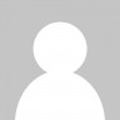Addressing management issues
Disposal of sharps containers for outpatients, responsibility for infant metabolic screening program and definition of sexual harassment
Disposal of sharps containers for outpatients
Q: How should outpatients
dispose of their sharps containers? Our hospital is not in the business of handling outpatient biohazardous waste.
A: Alton Sturtevant recommends,
Contact your local biohazard waste disposal company and the local health department and inquire about their ability to provide sharps disposal for outpatients. Some states allow disposal of sharps with ordinary waste for households. Other states require that healthcare providers such as nursing homes and hospitals accept outpatient biohazards for disposal. Effective July 1, 1995, hospitals and nursing homes were required to accept properly contained home medical waste for disposal, according to the New York State Department of Environmental Conservation
(http://www.dec.state.ny.us/website/dshm/sldwaste/sharps.htm). Each locations laws will vary relating to this issue.
Marti Bailey points out, Although some home trash collectors will not accept biohazardous waste, others will. The best suggestion that I have heard is to collect the used sharps in a used plastic detergent bottle that is capped before being discarded. Sharps should definitely only be collected in some type of container that is puncture-proof. The fact is that any used razor blade or even opened food can, in the right situation, could be infected with disease organisms, so it seems that by banning home biohazardous waste, trash haulers are certainly not eliminating risk. I do think that you should NOT accept outpatient used sharps without a written policy that is approved by hospital administration following consultation with risk management. Its a very nice thing to be able to help patients in this regard, but considering financial constraints imposed on healthcare, I dont think its prudent to take on the burden of any additional expense, no matter how minor.
Bottom line. Since laws may vary, seek advice from your institutions legal department.
Who is responsible for infant metabolic screening program?
Q: Our state has an infant
metabolic screening program that requires every newborn baby to have at least two blood specimens collected and sent to the state lab for testing, to identify diseases in infants that are reversible or treatable with early detection. Our nursery is responsible for completing the information card. The nurse or phlebotomist collects the specimens, and technologists check the cards for completeness before sending to the state. Frequently, the information is incomplete or the specimen is inadequate. When the nurses are called for information, they get upset because they are too busy to be bothered. When the phlebotomists are asked to recollect, they are upset because the baby is a very difficult stick. Is there a way to get the technologists out of the middle of this scenario?
A: Marti Bailey suggests, I doubt
that youre alone in this situation. To try to get a suitable blood sample from a newborn infant who is more than 24 hours old (metabolic screening is not reliable on infants less than 24 hours old) before the baby leaves the hospital is a real challenge. Our hospital has a nursing position dedicated to infant metabolic screening and, in spite of this, things dont always go smoothly. I believe that the importance of your getting a firm grip on the problem cannot be underestimated, and it simply may not be possible to keep your technologists out of the middle. I say this because its only going to take one very unfortunate incident where a baby who has a metabolic disorder fails to be tested, which will leave both the patient and your hospital to face dire consequences.
According to Alton Sturtevant, Ensure that the lab manager and medical director are aware of the problem and have a chance to provide solutions before you attempt to solve it alone. Sit down with the director of nurses and laboratory manager to discuss this problem to ensure that a specific department has the responsibility for the completion of this important task. There should be a policy defined by the institution as to who is responsible for this project. Once this is determined, then support the solution, even if it involves the technology group.
Larry Crolla recommends, You should have a meeting with the head nurse on that unit and explain to him that this information is necessary. Also, there is a high amount of liability with this type of testing and ordering if it is conducted in a slipshod manner. If this doesnt work, then you need to get your medical director involved.
Bottom line. Make certain that the lab manager and medical director are aware of and have a chance to provide solutions to this problem before you attempt to solve it alone. There should be a policy defined by the institution as to who is responsible for this project.
Definition of sexual harassment
Q: What is considered sexual
harassment in the workplace?
A: Alton Sturtevant points out, The
law defines it as unwelcome sexual conduct that creates a hostile work environment. Some conduct is easily identified as sexual harassment (i.e., the demand for sexual favors). Other forms of sexual harassment lend themselves to interpretation by individuals and the legal system (i.e., pats and hugs). Inappropriate comments or suggestive jokes and pictures can all be considered sexual harassment if they make the recipient feel uncomfortable. The activities must usually be repeated to suggest that a hostile work environment exists.
To help you define sexual harassment, you should mine the Internet on the topic. One good site is
www.aclu.org.
According to Marti Bailey, EEOC guidelines define sexual harassment generally as unwelcome sexual advances, requests for sexual favors and other verbal or physical conduct of a sexual nature. Under Title VII, Federal law recognizes two different sets of legal grounds for claiming sexual harassment. In the first, quid pro quo, the offense is directly linked to terms of employment that form the basis for employment decisions. An example would be a supervisor who demands sexual favors in return for a subordinate keeping a job or receiving promotions. The employer is always held strictly liable in quid pro quo cases, even if there was no knowledge of the conduct.
The second and more common ground for sexual harassment is what is termed a hostile work environment, which the Supreme Court has stated constitutes grounds for action only when the conduct is unwelcome, based on sex, and is severe or pervasive enough to alter the conditions of the victims employment and create an abusive work environment. Roberts and Mann point out in Sexual Harassment in the Workplace: A Primer
(www3.uakron.edu/lawrev/robert1.html) that the courts seem to be finding for victims of sexual harassment due to hostile work environment far more than they did initially. They specify that a hostile work environment probably exists if any of the following are present: sexual propositions, pornography, extremely vulgar language, sexual touching, degrading comments or embarrassing questions or jokes. In the case of hostile work environment, employers are liable when their supervisors or agents create a hostile environment, or if they knew or should have known of the sexual harassment and failed to take immediate and appropriate corrective action. According to the EEOC, employers know or should have known of the harassment if it is openly practiced in the workplace, is well-known among employees or is brought to the employers notice by a victim filing a charge.
Ms. Bailey adds, Roberts and Mann indicate that sexual harassment is still prevalent despite widespread publicity, and that as many as 95 percent of incidents may go unreported. What this means for companies is that they simply cant afford to underestimate the importance of ongoing efforts to address the problem. Companies need to have comprehensive, detailed sexual harassment policies in place prior to any incident occurring, and then take rapid, appropriate action when an incident does occur. The stakes have gone way up now that victims of sexual harassment can recover compensatory charges beyond back pay and including future losses. In some cases, punitive damages can also be collected. If theres something going on that is even remotely sexually suggestive and it is offending anyone, then it needs to stop.
Bottom line. Each facility should have a sexual harassment policy developed in conjunction with the legal and human resources department. Initial employee training and yearly retraining about sexual harassment are necessary. Make certain that all employees know the consequences for not following the sexual harassment policy.
Christopher S. Frings is an internationally known consultant and speaker on the topics of leadership, managing change, time management, reaching goals, and stress management. His consulting firm, Chris Frings & Associates, is in Birmingham, AL.
April 2003: Vol. 35, No. 4
© 2003 Nelson Publishing, Inc. All rights reserved.



